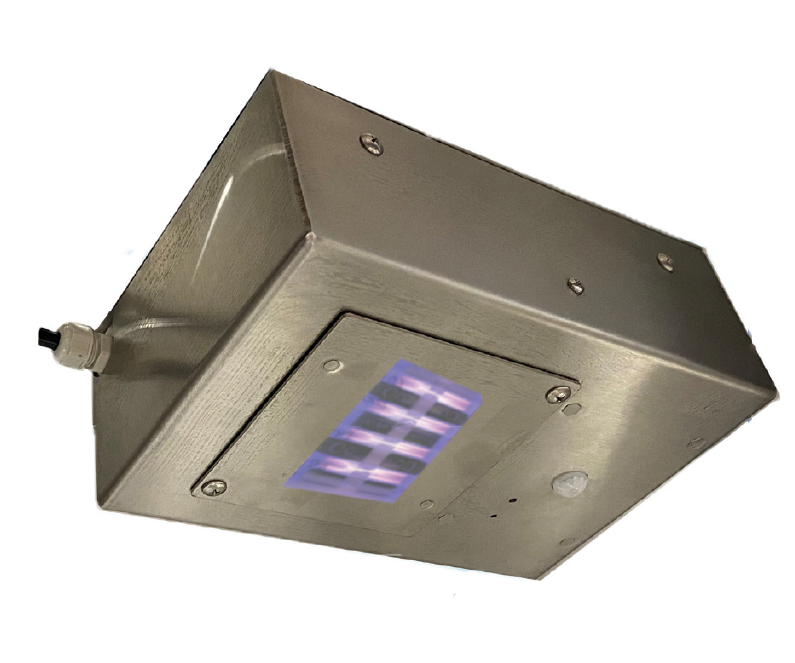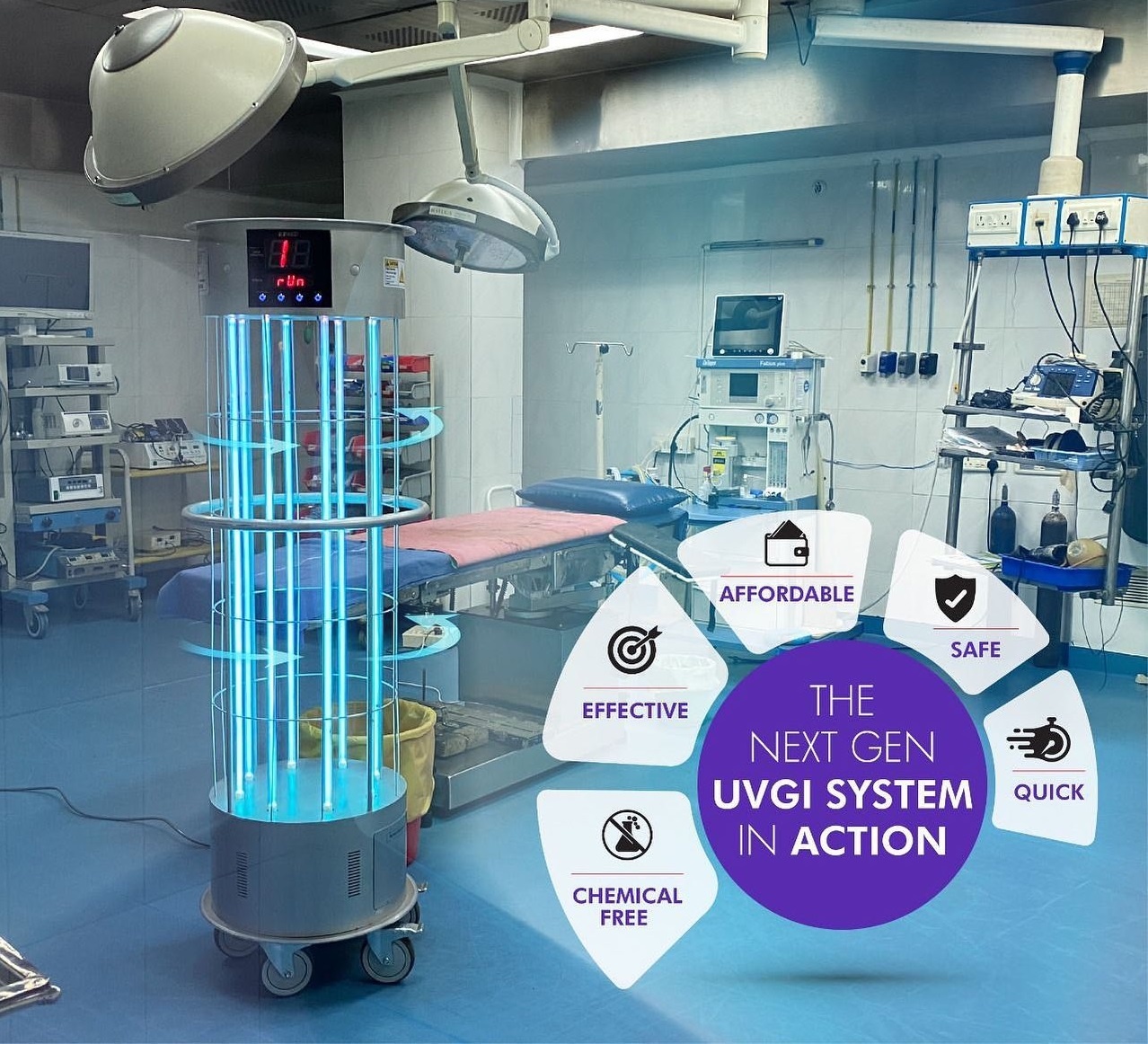Exploring the Advantages of Far UVC Light: Changing Indoor Air Quality
Indoor air quality has constantly been a concern, yet the current global health and wellness dilemma has brought it into sharper focus. As we navigate the obstacles of a post-pandemic world, finding ingenious options to boost air quality has actually come to be critical. One such service that has actually obtained interest is Far UVC light. This sophisticated modern technology has the possible to revolutionize interior air high quality by effectively counteracting airborne virus without presenting harm to people. But just how precisely does Far UVC easy work? What are its health and wellness advantages? And how can it add to lowering allergens in our living rooms? In this conversation, we will certainly explore the interesting globe of Much UVC light and uncover its potential in transforming the method we guard our interior settings.
Exactly How Much UVC Light Works
Much UVC easy work by producing short-wavelength ultraviolet light that has the ability to pass through and inactivate microbes. Unlike standard UV light, which can be harmful to human skin and eyes, much UVC light has a shorter wavelength that is soaked up by the outer layers of human skin, avoiding it from reaching the underlying living cells. This makes it a efficient and safe choice for constant sanitation in occupied areas.
When much UVC light is emitted, it communicates with the DNA and RNA of microbes, including germs and infections, interrupting their capability to reproduce and causing them to end up being inactive. The high energy of the short-wavelength light damages the molecular framework of the hereditary product, protecting against the microorganisms from spreading out and reproducing.

Furthermore, far UVC light can be easily integrated right into existing lights components, making it an economical remedy for a wide variety of applications, including healthcare centers, institutions, workplaces, and mass transit. Its capability to continuously decontaminate busy rooms without posing a risk to human health and wellness makes much UVC light an encouraging modern technology in the field of indoor air quality administration.
Much UVC Light's Influence on Airborne Pathogens
The effect of far UVC light on airborne pathogens is significant in minimizing the transmission of contagious diseases and improving interior air high quality. Far UVC light describes a details series of ultraviolet light that has a wavelength between 207 and 222 nanometers. Unlike conventional UVC light, which is dangerous to human skin and eyes, much UVC light has been located to be secure for people while still being effective against virus.
Research studies have revealed that much UVC light has the capability to suspend a vast array of airborne infections, including the flu virus and the coronavirus (far-uvc). These virus are transferred via breathing beads, and by utilizing far UVC light, it is feasible to decrease their stability and prevent their spread
One of the crucial benefits of utilizing much UVC light is its ability to reach all locations of an area. Unlike various other disinfection approaches that might have limited reach, far UVC light can be installed in overhead illumination components, guaranteeing that the whole room is dealt with. This makes it particularly effective in congested locations such as medical facilities, institutions, and public transport.
Additionally, far UVC light can be utilized continually without positioning a threat to human wellness. It can be carried out as part of a thorough method to enhance interior air quality by reducing the focus of air-borne virus. By including far UVC light into existing air flow systems, it is feasible to develop much safer and healthier indoor settings.
Health Conveniences of Far UVC Light
Utilizing far UVC light gives numerous health benefits, making it an important tool in promoting public health and wellness and security. Much UVC light has been located to properly kill air-borne microorganisms, such as microorganisms and viruses, without hurting human skin or eyes. This makes it an optimal solution for decontaminating indoor environments and lowering the danger of infections.
Among the crucial health benefits of much UVC light is its capacity to fight the spread of air-borne diseases. Research studies have actually shown this page that far UVC light can properly inactivate viruses like influenza and consumption. By installing far UVC lighting fixtures in public rooms, such as offices, schools, and health centers, the transmission of these diseases can be considerably decreased.
Additionally, far UVC light has been discovered to be risk-free for constant exposure, as it does not cause skin damage or raise the threat of skin cancer cells. This results from the truth that far UVC light has a minimal series of penetration in human skin, preventing any injury to much deeper layers.
Along with its straight influence on airborne virus, much UVC light can additionally have indirect health and wellness advantages. By reducing the visibility of damaging bacteria in the air, it can enhance indoor air quality, bring about a decrease in respiratory symptoms and allergic reactions.
Much UVC Light's Function in Decreasing Allergens

Much UVC light, with its wavelength in the variety of 207 to 222 nanometers, has been shown to be efficient in suspending infections, microorganisms, and fungis. Current researches have actually additionally revealed that it can efficiently minimize the existence of allergens in interior areas. When far UVC light is given off, it communicates with the DNA and RNA of microorganisms, damaging their hereditary product and stopping their duplication.
Far UVC Light's Potential in Public Spaces
With its tried and tested performance in lowering irritants and inactivating microorganisms, much UVC light holds terrific prospective for application in public spaces. Public areas, such as medical facilities, flight terminals, institutions, and workplaces, are often crowded and prone to the spread of airborne illness. Incorporating far UVC light innovation in these locations can dramatically enhance interior air quality and reduce the transmission of hazardous pathogens.
One appealing application of far UVC light in public areas remains in ventilation systems - far-uvc. By setting up far UVC lights in heating and cooling systems, the innovation can sanitize the air as it circulates, efficiently decreasing the concentration of air-borne viruses and germs. This method can help protect against the spread click for more of conditions such as influenza, tuberculosis, and COVID-19, promoting a much healthier and much safer environment for occupants
In addition, much UVC light can be employed in the sanitation of often touched surfaces. High-touch locations in public areas, such as doorknobs, hand rails, and elevator switches, can harbor a multitude of virus. By strategically positioning far UVC source of lights in these areas, the technology can continually sanitize surface areas, reducing the danger of contamination and transmission.
Furthermore, the usage of far UVC light in public rooms is safe for human direct exposure. Unlike traditional UVC light, which can be harmful to human skin and eyes, much UVC light has actually been shown to be safe and secure for constant procedure in occupied areas. This makes it an optimal solution click here for more for boosting interior air quality without posturing any health and wellness threats to individuals.
Final Thought

Far UVC light works by releasing short-wavelength ultraviolet light that has the capability to permeate and inactivate bacteria. Unlike traditional UV light, which can be hazardous to human skin and eyes, far UVC light has a shorter wavelength that is absorbed by the external layers of human skin, stopping it from reaching the underlying living cells. Far UVC light refers to a specific variety of ultraviolet light that has a wavelength between 207 and 222 nanometers. Unlike conventional UVC light, which is harmful to human skin and eyes, much UVC light has actually been discovered to be safe for human beings while still being efficient versus microorganisms.
Unlike conventional UVC light, which can be unsafe to human skin and eyes, much UVC light has been proven to be safe and safe for constant operation in occupied spaces.